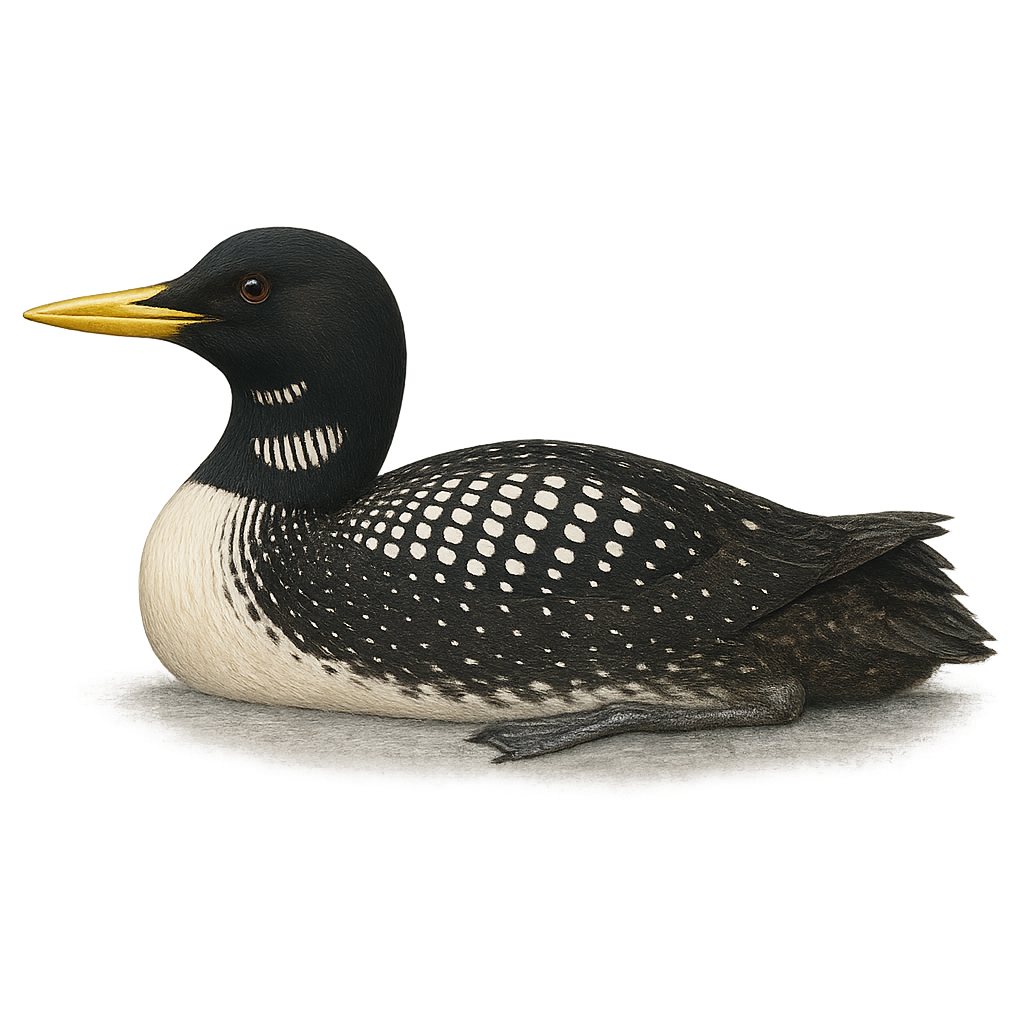Your wildlife photography guide.
Explore the yellow-billed loon in detail, study its behavior, prepare your shots.
Where to observe and photograph the yellow-billed loon in the wild
Learn where and when to spot the yellow-billed loon in the wild, how to identify the species based on distinctive features, and what natural environments it inhabits. The WildlifePhotographer app offers tailored photography tips that reflect the yellow-billed loon’s behavior, helping you capture better wildlife images. Explore the full species profile for key information including description, habitat, active periods, and approach techniques.
Yellow-billed Loon
Scientific name: Gavia adamsii

IUCN Status: Least Concern
Family: GAVIIDAE
Group: Birds
Sensitivity to human approach: Suspicious
Minimum approach distance: 30 m
Courtship display: June to July
Incubation: 27-29 jours
Hatchings: June to August
Habitat:
Arctic lakes, coastal seas, tundra
Activity period :
Primarily active during the day, with peak activity in the morning and late afternoon.
Identification and description:
The Yellow-billed Loon, Gavia adamsii, is a majestic aquatic bird primarily inhabiting Arctic regions. It is recognizable by its distinctive pale yellow bill and black-and-white plumage. In summer, it sports a black back with white spots and a grey head, while in winter, its plumage becomes duller. This bird prefers large lakes and coastal seas to feed on fish and aquatic invertebrates. It is known for its melodious and plaintive call that echoes across northern landscapes. Although its habitat is remote, it is sometimes observed during its migrations southward.
Recommended lens:
400mm – adjust based on distance, desired framing (portrait or habitat), and approach conditions.
Photography tips:
To photograph the Yellow-billed Loon, it is advisable to use a telephoto lens of at least 400mm to capture detailed images without disturbing the bird. Look for observation points near Arctic lakes or coasts where they feed. Be patient and discreet, as these birds can be suspicious. The best lighting is found early in the morning or late afternoon when the sun is low. Use a tripod to stabilize your camera and achieve sharp images.
The WildlifePhotographer App is coming soon!
Be the first to explore the best nature spots, track rutting seasons, log your observations, and observe more wildlife.
Already 1 432 wildlife lovers subscribed worldwide

